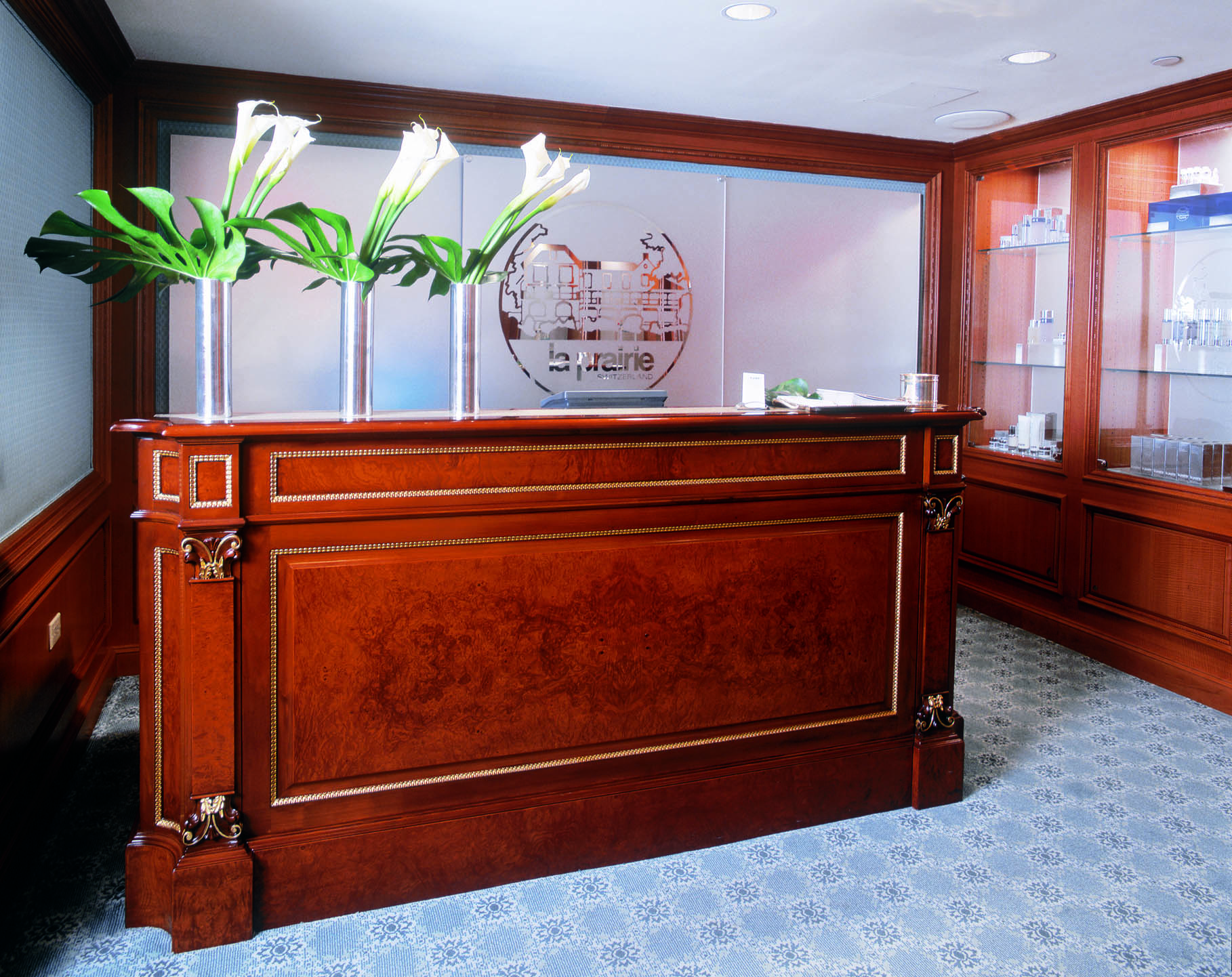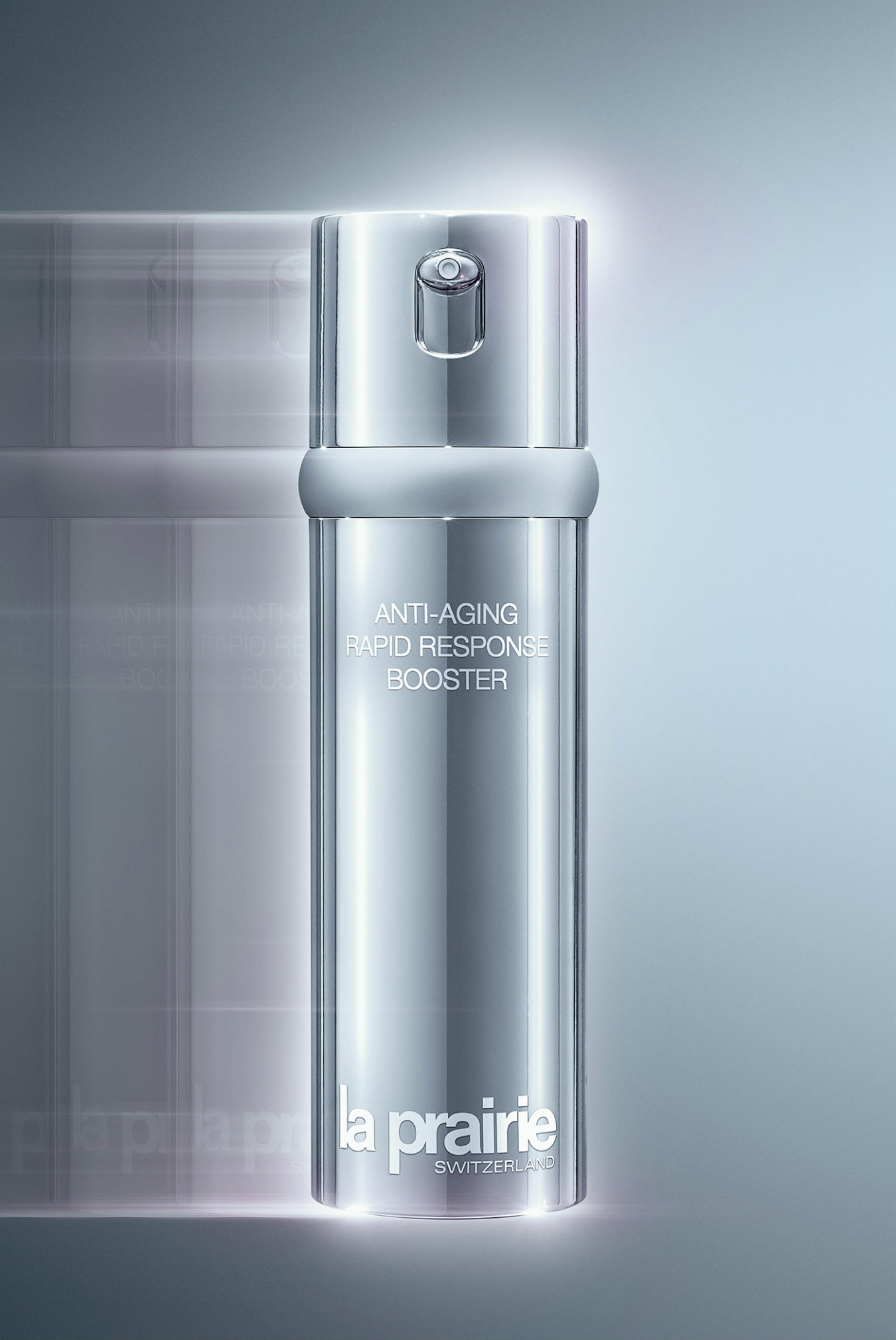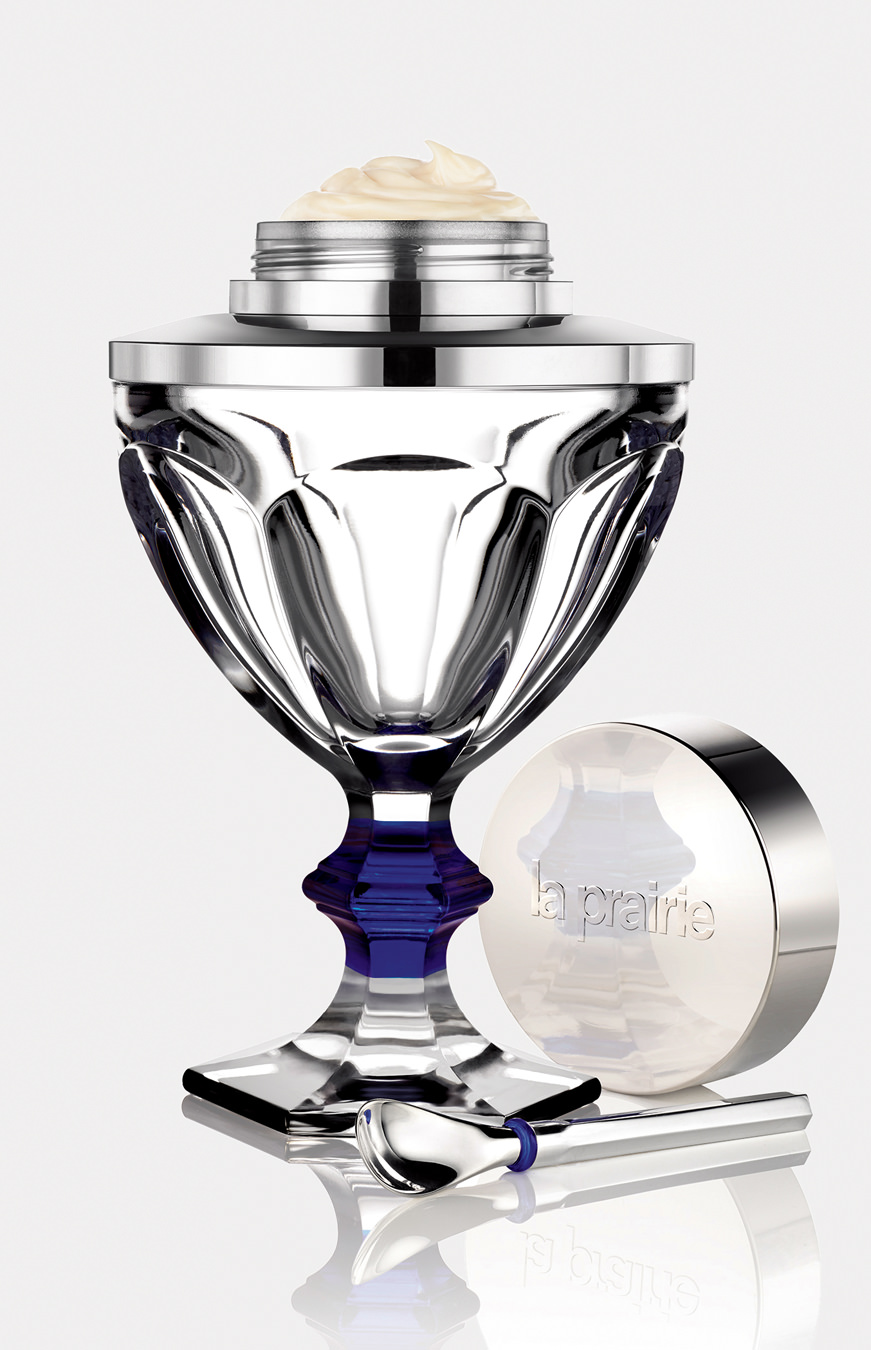Cellular Cosmetic Science
Why the Swiss beauty brands get it right.

Science advances beauty in Valmont’s L’Elixir des Glaciers Sérum Précieux Votre Visage, La Prairie’s Skin Caviar Eye Lift, La Colline’s NativAge La Cure, and Swiss Line’s Cell Shock Age Intelligence Recovery Serum.
Which countries spring to mind when you think of excellent skin care? Perhaps France, the United States, South Korea, and Japan? Add Switzerland to the list. It boasts household names like La Prairie and Valmont, as well as under-the-radar ones such as Swiss Line, Cellcosmet, and La Colline, all luxurious yet no-nonsense, and all with a similar focus: cellular science. It’s quite the pedigree for a country with just under 8.5 million residents.
In general, Switzerland punches above its weight when it comes to science and technology—it has 12 universities and more than two dozen research institutes including CERN, the European Organization for Nuclear Research. There’s also a thriving pharmaceutical industry and, of course, the watches. It’s where Albert Einstein researched and wrote his paper on special relativity. Such scientific success is related to Switzerland’s lack of natural resources, which means the government strongly promotes research.
You don’t get romantic tales or mystical ingredient stories from Swiss brands. “It’s less of those dreamy fantasy ingredients, like the rare flower that only blooms at midnight in some mountaintop garden and has to be hand-picked to preserve its nutrients. That’s not very Swiss,” says Custodio d’Avo, global brand director of Swiss Line. The focus, rather, is generally on anti-aging skin care, along with complexion products such as foundation, concealer, and powder. Some products incorporate Swiss ingredients, notably glacier water, but the main technology used is cellular science, meaning that products either contain cells (often from plants) or act on them.
“Cellular technology most probably became associated with Switzerland thanks to the pioneering work of Dr. Paul Niehans,” says Dr. Jacqueline Hill, director of strategic innovation and science for La Prairie. “For over 20 years at the Clinique La Prairie in Montreux, Dr. Niehans conducted painstaking research, which led to the development of an entirely new field of science and to the publication in 1960 of his book Introduction to Cellular Therapy.” Dr. Niehans’ work involved taking fresh animal cells and injecting them into patients to trigger the regeneration of tissue. That specific process is now illegal, but it effectively created an entire Swiss skin-care industry that uses ingredients to trigger skin cells’ natural rejuvenating capacity.
Niehans didn’t just gift cellular therapy to Switzerland. He was also instrumental in developing the concept of the medispa with Clinique La Prairie, established in 1931. Clinique Valmont had opened in 1905, also in Montreux. Both were known for their combination of luxury, service, and medicine, and were discreet locations where celebrities could recover in style after a nip and tuck. While the two skin-care brands are no longer associated with the clinics, that luxe-meets-science essence remains. Says Sophie Guillon, CEO of Valmont Cosmetics, “We’re not catering to trends, but are consistent and reliable—steady, hardly changing at all, but still always modern.”
The no-nonsense approach of the Swiss seems at odds with the current trend of elaborate, ritual-based regimens that you find in Korea or Japan, but pragmatism means these brands are happy to cater to everyone. “It’s true that Swiss people won’t use 15 products, but the point is, we offer ranges with different options and possibilities for everyone,” says Guillon. “The Swiss, perhaps they just apply one or two things, while Korean [skin-care users] will use a balm, a foaming cleanser, toner, water, essence, serum, emulsion, and cream.”
Valmont’s signature L’Elixir des Glaciers Sérum Précieux Votre Visage epitomizes that practical, science-meets-luxury approach. It contains glacial spring water, RNA, Triple DNA, and plant extracts, which aim to smooth skin and immediately make it more radiant by lifting it and reducing the appearance of wrinkles. “Swiss brands will always focus on global, visible benefits to skin, not using one particular ingredient to work on one function,” says Guillon. “It is always about the search for excellence, for effectiveness and ingredients that nourish the skin.”
Dr. Hill says the new Skin Caviar Eye Lift “perfectly sums up La Prairie’s brand values of luxury, performance, innovation, high-touch service, and Swissness.” It contains Cellular Complex and is designed to lift and firm the whole eye area, including the lids and brows, depuff eye bags, minimize crow’s feet, and reduce dark circles.
Thirty-year-old brand Swiss Line is based in Zurich but has roots in a Montreux clinic founded by Dr. Alfred Pfister, a colleague of Dr. Niehans. Its latest innovation is the Cell Shock Age Intelligence Recovery Serum. This targets skin inflammation, whether from pollution, sun exposure, stress, anti-aging ingredients like retinol, or procedures such as laser treatment or micro-needling. “People can be anxious about aging, and so they proactively address it but sometimes overdo it—you can get too much of a good thing,” explains d’Avo. “Essentially, they set an alarm ringing in skin that leads to inflammation, and if you don’t reset that alarm, other messages can’t be heard—in other words, anything else you want to do to your skin won’t be effective.” Besides the Recovery Serum, there are six boosters in the Age Intelligence range. Each targets a different skin issue, such as wrinkles, dullness, or pigmentation, and each can be added to the serum or your regular moisturizer.
The star product for La Colline, a 22-year-old brand based on the Swiss Riviera, is NativAge La Cure. An intensive 28-day treatment, it contains peptides to stimulate synthesis of collagen, elastin, and hyaluronic acid, which reduces the number of wrinkles while making them smaller. There’s also the brand’s CMAge® Complex, said to stimulate cell regeneration and oxygenation, plus its Cell Life Extender technology. As CEO Ghislain Pfersdorff explains, “This simply changes free radicals into water. It’s an elegant solution to fight the signs of aging.”
Swiss brands continue to advance cellular science, thanks to the country’s culture of innovation. La Prairie was one of the first to talk about pollution in relation to skin care, while Valmont has developed patented extraction methods for harvesting active ingredients from natural materials.
It’s clear that advances in Swiss cellular therapy go beyond just beauty, epitomizing the country’s dedication to science and the future of technology.
________
Never miss a story. Sign up for NUVO’s weekly newsletter here.




